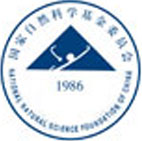 |
PlantRegMap/PlantTFDB v5.0
Plant Transcription
Factor Database
|
| Home TFext BLAST Prediction Download Help About Links PlantRegMap |
Transcription Factor Information
| Basic Information? help Back to Top | |||||||||
|---|---|---|---|---|---|---|---|---|---|
| TF ID | C.cajan_36723 | ||||||||
| Common Name | KK1_033552 | ||||||||
| Organism | |||||||||
| Taxonomic ID | |||||||||
| Taxonomic Lineage |
cellular organisms; Eukaryota; Viridiplantae; Streptophyta; Streptophytina; Embryophyta; Tracheophyta; Euphyllophyta; Spermatophyta; Magnoliophyta; Mesangiospermae; eudicotyledons; Gunneridae; Pentapetalae; rosids; fabids; Fabales; Fabaceae; Papilionoideae; Phaseoleae; Cajanus
|
||||||||
| Family | AP2 | ||||||||
| Protein Properties | Length: 499aa MW: 55066.3 Da PI: 6.4296 | ||||||||
| Description | AP2 family protein | ||||||||
| Gene Model |
|
||||||||
| Signature Domain? help Back to Top | |||||||
|---|---|---|---|---|---|---|---|
| No. | Domain | Score | E-value | Start | End | HMM Start | HMM End |
| 1 | AP2 | 53.4 | 6.3e-17 | 145 | 194 | 1 | 55 |
AP2 1 sgykGVrwdkkrgrWvAeIrdpsengkr.krfslgkfgtaeeAakaaiaarkkleg 55
s+y+GV++++++grW+++I+d + k+++lg f+ta Aa+a+++a+ k++g
C.cajan_36723 145 SQYRGVTFYRRTGRWESHIWD------CgKQVYLGGFDTAHAAARAYDRAAIKFRG 194
78*******************......55************************997 PP
| |||||||
| 2 | AP2 | 43.8 | 6.2e-14 | 237 | 287 | 1 | 55 |
AP2 1 sgykGVrwdkkrgrWvAeIrdpsengkrkrfslgkfgtaeeAakaaiaarkkleg 55
s+y+GV+ +k grW+A+ + +k+++lg f+t+ eAa+a+++a+ k +g
C.cajan_36723 237 SKYRGVTLHK-CGRWEARMGQF--L-GKKYVYLGLFDTEIEAARAYDKAAIKCNG 287
89********.7******5553..2.26**********99**********99776 PP
| |||||||
| Protein Features ? help Back to Top | ||||||
|---|---|---|---|---|---|---|
| Database | Entry ID | E-value | Start | End | InterPro ID | Description |
| Pfam | PF00847 | 5.8E-9 | 145 | 194 | IPR001471 | AP2/ERF domain |
| SuperFamily | SSF54171 | 9.15E-16 | 145 | 203 | IPR016177 | DNA-binding domain |
| PROSITE profile | PS51032 | 17.596 | 146 | 202 | IPR001471 | AP2/ERF domain |
| CDD | cd00018 | 3.27E-11 | 146 | 203 | No hit | No description |
| Gene3D | G3DSA:3.30.730.10 | 5.5E-17 | 146 | 202 | IPR001471 | AP2/ERF domain |
| SMART | SM00380 | 2.0E-31 | 146 | 208 | IPR001471 | AP2/ERF domain |
| CDD | cd00018 | 6.70E-25 | 237 | 297 | No hit | No description |
| Pfam | PF00847 | 1.3E-9 | 237 | 287 | IPR001471 | AP2/ERF domain |
| SuperFamily | SSF54171 | 5.75E-17 | 237 | 297 | IPR016177 | DNA-binding domain |
| PROSITE profile | PS51032 | 15.461 | 238 | 295 | IPR001471 | AP2/ERF domain |
| Gene3D | G3DSA:3.30.730.10 | 2.2E-16 | 238 | 295 | IPR001471 | AP2/ERF domain |
| SMART | SM00380 | 4.2E-31 | 238 | 301 | IPR001471 | AP2/ERF domain |
| PRINTS | PR00367 | 4.7E-6 | 239 | 250 | IPR001471 | AP2/ERF domain |
| PRINTS | PR00367 | 4.7E-6 | 277 | 297 | IPR001471 | AP2/ERF domain |
| Gene Ontology ? help Back to Top | ||||||
|---|---|---|---|---|---|---|
| GO Term | GO Category | GO Description | ||||
| GO:0006355 | Biological Process | regulation of transcription, DNA-templated | ||||
| GO:0005634 | Cellular Component | nucleus | ||||
| GO:0003677 | Molecular Function | DNA binding | ||||
| GO:0003700 | Molecular Function | transcription factor activity, sequence-specific DNA binding | ||||
| Sequence ? help Back to Top |
|---|
| Protein Sequence Length: 499 aa Download sequence Send to blast |
MWDLNDSPDQ RKLDEESEGC SSLKTSIDGD DDNNNKGKRV GSVSNSSSSA VVIEDGSEEE 60 EEDDEEEHDE DSMDSDLPPV TRQFFPVDDA DVAVASGAAT GSSTFPRAHW VGVKFCQSET 120 LGAGKSVEVS QPMKKSRRGP RSRSSQYRGV TFYRRTGRWE SHIWDCGKQV YLGGFDTAHA 180 AARAYDRAAI KFRGVEADIN FNIEDYEDDL KQMSNLTKEE FVHVLRRQST GFPRGSSKYR 240 GVTLHKCGRW EARMGQFLGK KYVYLGLFDT EIEAARAYDK AAIKCNGKEA VTNFDPSIYE 300 NELNSGNAAA DHNLDLSLGN SSSKPSNNQA LGNHASNAAT ATHDQHLPSE SNWRNGGSKP 360 KLVNILPKPC HRSNNKDAHG RDVHGESEAL RMLSQTHLHS PASNEMQRYG PYRSPGGESQ 420 MLQNFAHIHP PNFHFPSSSI GGRIGSDLSL SLADQQQWQS GPPHYLATAA ASSGFPQQIR 480 PSSQGWLQKN GFHTLMRPS |
| Functional Description ? help Back to Top | ||||||
|---|---|---|---|---|---|---|
| Source | Description | |||||
| UniProt | Probable transcriptional activator that promotes early floral meristem identity (PubMed:7919989). Is required subsequently for the transition of an inflorescence meristem into a floral meristem (PubMed:1675158). Plays a central role in the specification of floral identity, particularly for the normal development of sepals and petals in the wild-type flower, by spatially controlling the expression domains of multiple floral organ identity genes (PubMed:1675158, PubMed:23034631). Acts as A class cadastral protein by repressing the C class floral homeotic gene AGAMOUS in association with other repressors like LEUNIG and SEUSS (PubMed:1675158). Directly represses AGAMOUS by recruiting the transcriptional corepressor TOPLESS and the histone deacetylase HDA19 (PubMed:23034631). It is also required during seed development (PubMed:1675158). {ECO:0000269|PubMed:1675158, ECO:0000269|PubMed:23034631, ECO:0000269|PubMed:7919989}. | |||||
| Cis-element ? help Back to Top | |
|---|---|
| Source | Link |
| PlantRegMap | C.cajan_36723 |
| Regulation -- Description ? help Back to Top | ||||||
|---|---|---|---|---|---|---|
| Source | Description | |||||
| UniProt | INDUCTION: Negatively regulated by the C class floral homeotic protein AGAMOUS in stamens and carpels. MicroRNA 172 (miRNA172) negatively regulates APETALA2 at the translational level and may modulate its expression pattern. Seems not to be influenced by jasmonate and Alternaria brassicicola. {ECO:0000269|PubMed:12805630, ECO:0000269|PubMed:12893888, ECO:0000269|PubMed:14555699}. | |||||
| Regulation -- PlantRegMap ? help Back to Top | ||||||
|---|---|---|---|---|---|---|
| Source | Upstream Regulator | Target Gene | ||||
| PlantRegMap | Retrieve | - | ||||
| Annotation -- Nucleotide ? help Back to Top | ||||||
|---|---|---|---|---|---|---|
| Source | Hit ID | E-value | Description | |||
| GenBank | EU857402 | 0.0 | EU857402.1 Glycine max apetal2-like protein (AP2) gene, complete cds. | |||
| Annotation -- Protein ? help Back to Top | |||||||
|---|---|---|---|---|---|---|---|
| Source | Hit ID | E-value | Description | ||||
| Refseq | XP_020237263.1 | 0.0 | floral homeotic protein APETALA 2 | ||||
| Swissprot | P47927 | 1e-136 | AP2_ARATH; Floral homeotic protein APETALA 2 | ||||
| TrEMBL | A0A151RQV1 | 0.0 | A0A151RQV1_CAJCA; Floral homeotic protein APETALA 2 | ||||
| STRING | XP_007155905.1 | 0.0 | (Phaseolus vulgaris) | ||||
| Orthologous Group ? help Back to Top | |||
|---|---|---|---|
| Lineage | Orthologous Group ID | Taxa Number | Gene Number |
| Fabids | OGEF3784 | 34 | 63 |
| Best hit in Arabidopsis thaliana ? help Back to Top | ||||||
|---|---|---|---|---|---|---|
| Hit ID | E-value | Description | ||||
| AT4G36920.2 | 1e-122 | AP2 family protein | ||||



